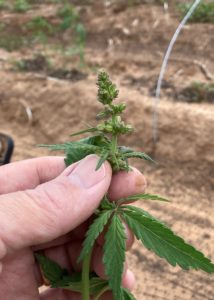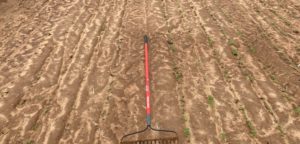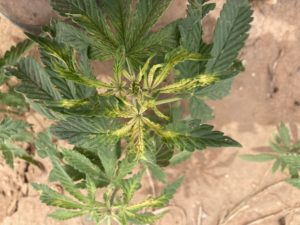Dr. Calvin Trostle, Professor & Extension Agronomist/AgriLife State Hemp Specialist, TAMU Dept. of Soil & Crop Sciences, Lubbock, (806) 746-6101, ctrostle@ag.tamu.edu
Next “First Tuesday” Statewide Hemp Zoom Update from Texas A&M AgriLife—June 1
We continue the statewide Zoom updates we began in March. The June update will be Tuesday, June 1, 5:15-6:30 PM Central Time. We will continue throughout 2021 at the same time on the first Tuesday.
June topics will include an update from Dr. Holly Davis, Texas A&M AgriLife Extension entomologist, Weslaco (office 956.968.5581, holly.davis@ag.tamu.edu) She will discuss common insect issues for field and greenhouse production and how to address them. This will include comments on any suitable, potentially effective repellant/suppressive products and their potential efficacy.
Register in advance for this meeting:
https://agrilife.zoom.us/meeting/register/tJUqf-2vqDoiH9LSXxZ6B6-upbiqiN658YGl
After registering, you will receive a confirmation email from Michael Clawson (his Zoom account, which can handle 100+ attendees) containing log-in information for the meeting.
Texas A&M AgriLife Planting Date Observations, Lubbock–Update
I noted last month details on the planting date trial at Lubbock. The objective in this observation is to identify hemp fiber (primarily) and grain varieties that enter premature reproductive growth. This is detrimental. It is due to far northerly hemp lines (Canada, central and northern Europe) having a strong photoperiod response to longer nights in the southern U.S.
These varieties will continue to be monitored weekly for development of reproductive growth. The next planting date occurred May 21 (three additional varieties; up to five more will be added in June). We will continue to August on 28-day intervals. Due to reports from others including Univ. of Arizona, we will also watch to determine with longer days/shorter nights if any early flowering varieties convert to vegetative growth. This has occurred in some varieties, which then resume reproductive growth in late August/September.
Within input from industry and university colleagues we have increasing interest in testing far South Texas plantings for fiber and grain starting in late August, especially in the October time frame. This is based in part on Oregon State University research conducted in California’s Imperial Valley (20 miles north of Mexico border).
Table 1. Initial results for the April 24 hemp fiber planting date, Lubbock, TX, including the date of initial observation of reproductive growth. Results are through May 28, 2021.
| April 24 Planting | Initial | ||
| Lubbock, Texas (33.4 N) | Region of | Reproductive | |
| Variety | Source | Origin | Growth |
| The Joker | Black Canyon Seed | Colorado | Not yet |
| AV-1 | AcquiFlow | Iowa/Colorado/Texas | Not yet |
| Bialobrzeskie | Intl. Hemp | Poland | May 22 |
| Jin Ma | Panda Biotech | China | Not yet |
| Anka | Canadian Hemp Alliance | Canada | May 19-22 |
| MS-77 | EcoFibre | Australia | Not yet |
| Eletta Campana | Italian Ministry of Ag. | Italy | Not yet |
| Fibranova | Italian Ministry of Ag. | Italy | Not yet |
| Yuma Crossbow | Dion Oakes | Colorado | May 16-22 |
| Hliana | Panda Biotech | Ukraine | May 16-18 |
| Yuma China | Panda Biotech | China | Not yet |
| SHV-1* | Sun House Ventures | Colorado | Not yet |
| Carmagnola Selezionata | Italian Ministry of Ag. | Italy | Not yet |
*Previously marketed as ‘A2’ (Dion Oakes)
Typical early reproductive growth observed is the male pollen sacs (Fig. 1). Female buds likely appear a couple weeks later.
Fig. 1. Premature hemp reproductive growth (male pollen sacs) in ‘Yuma Crossbow,’ Lubbock, TX. Planted April 24, initial observations on May 16 & 22 (22 & 28 days after planting). This is a dual-purpose variety for fiber and grain. Growth will be observed weekly through the summer.
Premature Reproductive Growth—How you can help!
As noted last month, for grain and fiber varieties, please e-mail me or send digital pics—anywhere in Texas at any planting date—of growth and development. If they are flowering prematurely, we need to know. But equally, if they are growing normally, especially for at least 2 months after planting, we need to know that as well.
Texas A&M AgriLife Variety Trials & Observations for 2021
Texas A&M AgriLife procured funding for a fiber variety trial at Lubbock, which was drilled May 11. A fiber and grain observation trial was planted in Williamson Co. on May 13. Pending possible funding, I will also plant a fiber variety trial near Chillicothe, TX. There are 13 to 15 varieties at each site.
I will plant one small cannabinoid hemp trial at Lubbock the second week of June. I would like to have planted this if we could a month sooner to potentially allow for longer-season production.
Fig. 2. Hemp fiber variety emergence May 22 after planting May 11, 2021. The variety on the right, Yuma (from China, may also be named ‘Yu Ma’) had the highest %germination and large seed. It has distinctly more vigorous early growth across three Texas A&M AgriLife trials. Slow emergence does not necessarily mean a poor variety. We watched for possible soil crusting and broke as necessary to ensure emergence.
Common Field Symptoms, Often from Wet Weather
Two symptoms I have observed in late May are likely due to wet weather.
First, iron deficiency can occur in saturated soils that do not readily drain. Symptoms are a distinct “interveinal chlorosis” where the young (iron does not move in the plant) leaf tissue is yellow, but the veins remain green (Fig. 3). Iron is also an issue for most Texas crops, including hemp, where soil pH is high (iron is less available). Often, with the return of dry weather plants grow out of the symptoms. As plants grow and the root volume expands, this also can fix iron issues. This may be of special concern for growers of cannabinoid hemp where one plant is valuable. For treatments, an iron chelate or ferrous sulfate (non-chelated form) can be sprayed on the plants. Soil application of iron is relatively inefficient and often not cost-effective.
Second, a less defined condition is also possibly related to wet soils but may be more than just iron (Fig. 4). This young tissue can also become light in color if you have many cloudy days. Usually, the plants grow out of it.
Fig. 3 . Typical iron deficiency symptoms in hemp with interveinal chlorosis. Veins remain green. This is most likely observed on young leaves. (May 25, 2021, Burleson Co., TX; 8+ inches of rain received in the previous two weeks.)
Fig. 4 . Common clustering of yellowing on youngest leaves. Can be due to iron (severe iron deficiency may bleach leaves completely yellow) or cloudy conditions. The rest of the foliage looks normal. Conditions normally improve with drying weather and sunshine. (May 27, Lubbock, TX—4 inches of rain in previous 12 days.)
Storm Damage on Hemp Plants
The April 24 planting date observation near Lubbock received strong winds and hail on May 24. About 20% of plants that were >6” tall received some damage (Fig. 5). Fortunately, hemp is a versatile plant with many growing points. For crops like sunflower or cotton, if the terminal (top) of the plant is destroyed or the stem is broken off, then the plant will not produce. When injury in hemp occurs, yes, the damage hurts the plant, but hemp has the ability to regrow from many different potential growing points This regrowth is commonly from the leaf axil, the “crotch” between the main stem and a leaf stem or branch. Short of a total wipeout that kills plants, I suspect even significant injury on hemp will not stop its potential to retain productivity for cannabinoids, fiber and grain.
Cannabinoid plants are probably more susceptible as they are more exposed (5’ X 5’ planting pattern?). Fiber and grain plants are drilled and so the stand is dense offering protection to each other. In other crops we often say after hail damage the best thing you can to do is ignore it for a week. Only then assess the damage and a possible replanting/salvage decision. The week gives the plant time to recover and initiate new growth. When you see this, it is reassuring. If you have questions about possible storm damage on your hemp, contact Calvin Trostle, and send pics of the typical damage and percent of plants affected.
Fig. 5. Combination wind and hail damage from May 24 (pic on May 28) on hemp fiber planted April 24 (Lubbock, TX). 1. Broken stem. If stem above the break does not die, it will be weak as it has to curve to resume upward growth. This plant may send out new growth (and harvested fiber stalk) from below the break. 2.Broken stem where the top is dead. But new growth seems likely at the top of the remaining stem from the cluster of leaves. 3. Another broken larger stem. The break is severe and though the top stem may not die, the vascular tissue is mostly separated and so it cannot sustain significant productive growth. Regrowth is likely below the break. 4. Top is completely broken off. Regrowth is expected to generate a new stem suitable for fiber harvest.
Texas A&M AgriLife at the Austin Lucky Leaf Expo
AgriLife hosted a booth at this May 14-15 meeting in Austin. We received a lot of questions about our hemp program. This conference is unlike our traditional Extension meetings with clientele. We received numerous comments “We are glad Texas A&M AgriLife is here.” Dr. Tom Isakeit spoke on behalf of AgriLife on Saturday. We had a sign-up sheet for this newsletter and the First Tuesday updates. We were encouraged by attending in Austin. It was an affirmation that Texas A&M AgriLife can and does play an important role as a partner in a Texas hemp industry for cannabinoids, fiber, and grain. Thank you to those who stopped to introduce yourselves and share your hemp needs. AgriLife will begin following up the requests for contact the week of June 8.
Texas Department of Agriculture Hemp Reminders
TDA reminds all hemp producers that a Lot Report is required for all Lot Crop Permits issued no matter if the crop was grown or not. You are required to submit a Lot Report to TDA no later than the 30th day after a final sample is collected from a lot, or not later than 180 days from the lot permit issue date, whichever is earlier. The RHP-815 Lot Report form to report this information is can be found at https://www.texasagriculture.gov/Portals/0/forms/REG/Hemp/RHP_815_Hemp_Lot_Report.xlsx
Ongoing Texas A&M AgriLife Extension Hemp Resources
General Information
We continue adding resources at http://agrilifeextension.tamu.edu/hemp including under ‘Hot Topics & Latest Updates’ on the main page. Further production updates will be posted the week of June 7.
Hemp Plant Disease Diagnostics—Texas A&M AgriLife @ Amarillo
Download the needed hemp-specific form from https://thppdd-lab.tamu.edu The policy for hemp diagnostics and collection/packaging/submitting plants is on the back of the form. It is best to notify Dr. Ken Obasa in advance of sending samples, office 806.677.5600, ken.obasa@ag.tamu.edu In fact, you may e-mail digital images first which might provide a diagnosis and save the transport permit and diagnostic fees.
Texas A&M AgriLife Hemp Potency Testing for THC & Cannabinoids
Sample analyses of hemp for THC and cannabinoids is available through Texas A&M AgriLife labs at Uvalde and Lubbock. College Station will be added soon. For further information consult http://soiltesting.tamu.edu/hemp.html This service is not currently for official THC analyses required by law.
Our Hemp Program Twitter Account
@TXAgriLifeHemp
Video Series: Economic & Legal Considerations for Hemp Production in Texas
This series of 29 videos is available at https://agecoext.tamu.edu/resources/legal-and-economic-considerations-for-growing-hemp/ Topics cover legal, contracting, economics, and potential crop insurance. The website is divided into the sections below. Choose the YouTube video you want to see and also the slides for each presentation (3 to 15 minutes).
Do you have hemp questions?
Find regional and topical Texas A&M contacts for hemp at https://cdn-ext.agnet.tamu.edu/wp-content/uploads/2020/02/AgriLife-Hemp-Resources-Personnel-2020-02Feb10-Trostle.pdf
If you have a question that we can include in our Twitter communication, via this newsletter or the First Tuesday updates, please e-mail Calvin Trostle.
Upcoming Texas A&M AgriLife Extension Hemp Programs
In addition to the June 1 statewide hemp update listed above, the July meeting will be July 6, 5:15-6:30 PM.
“Texas A&M AgriLife Extension provides equal opportunities in its programs and employment to all persons, regardless of race, color, sex, religion, national origin, disability, age, genetic information, veteran status, sexual orientation, or gender identity.”
The Texas A&M University System, U.S. Department of Agriculture, and the County Commissioners Courts of Texas Cooperating.




